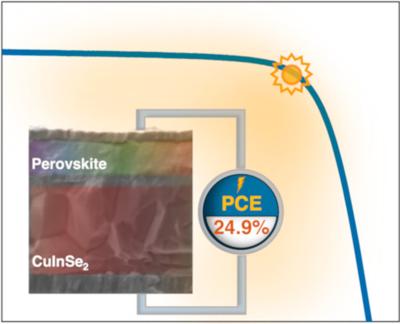Researchers taking part in the EU project PERCISTAND, among them ones from the Karlsruhe Institute of Technology (KIT) and TNO, have developed perovskite/CIS tandem solar cells with an efficiency of almost 25% – the highest for this technology to date.
In addition, this combination of materials reportedly ensures lightness and versatility, so that the use of these tandem solar cells on vehicles, portable devices and foldable or rollable devices is also conceivable.
The combination of perovskites with other materials such as copper indium diselenide (CIS) or copper indium gallium diselenide (CIGS) promises additional advantages. This enables flexible and lightweight tandem solar cells that can be attached not only to buildings, but also to vehicles and portable devices. Such solar cells could even be folded or rolled for storage and extended when needed, for example on blinds or awnings, which protect from the sun while generating electricity.
The international team of researchers, led by Dr. Marco A. Ruiz-Preciado and tenure-track professor Ulrich W. Paetzold from the Light Technology Institute (LTI) and Institute for Microstructure Technology (IMT) of KIT, have succeeded in using perovskite/CIS tandem solar cells with a peak efficiency of 24.9% (23.5% certified).
“This is the highest reported efficiency for this technology and the first ever high efficiency achieved with a nearly gallium-free copper indium diselenide solar cell in a tandem,” said Ruiz-Preciado. Reducing the amount of gallium leads to a narrow band gap of about one electron volt eV, which is very close to the ideal value of 0.96 eV for the bottom solar cell in a tandem.
The band gap is a material property that determines the portion of the solar spectrum that a solar cell can absorb to generate electricity. In a monolithic tandem solar cell, the band gaps must be such that the two cells can produce similar currents to achieve maximum efficiency. If the band gap of the bottom cell changes, the band gap of the top cell must be adjusted accordingly; vice versa as well.
To tune the band gap for efficient tandem integration, high bromine perovskites are commonly used. However, this often leads to voltage losses and phase instability. Since the researchers at KIT and their partners use narrow-bandgap CIS solar cells for their bottom tandems, they can fabricate the top solar cells from perovskites with low bromine content, making them more efficient and stable.
“Our study demonstrates the performance potential of perovskite/CIS tandem solar cells and defines the basis for future developments that can further improve efficiency,” said Paetzold. “We have reached this milestone thanks to the cooperation in the EU project PERCISTAND and especially thanks to the close cooperation with the Netherlands Organization for Applied Scientific Research.”




